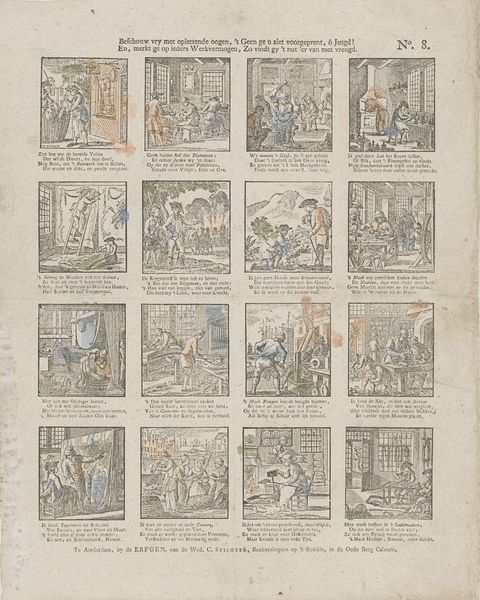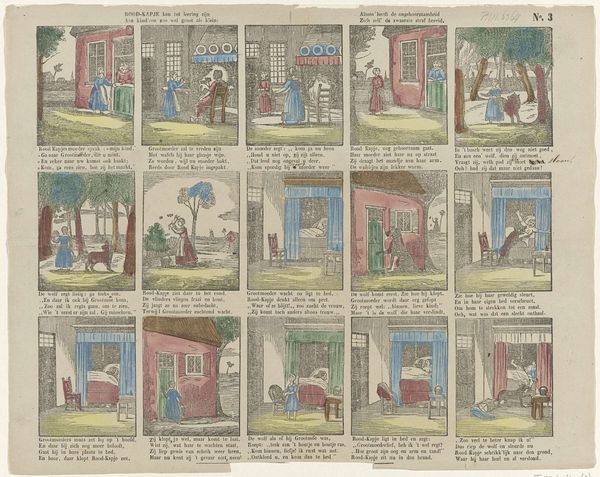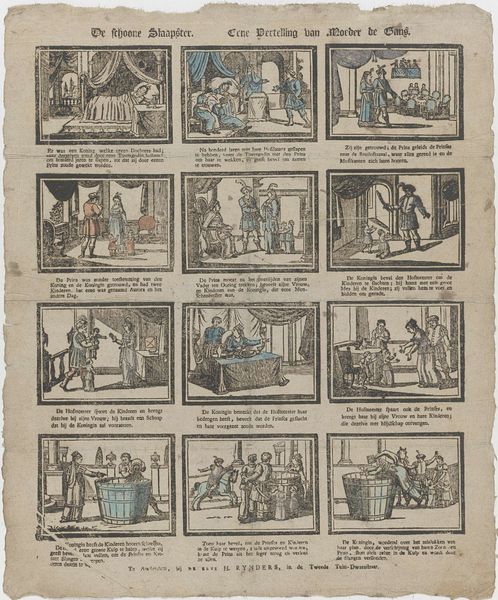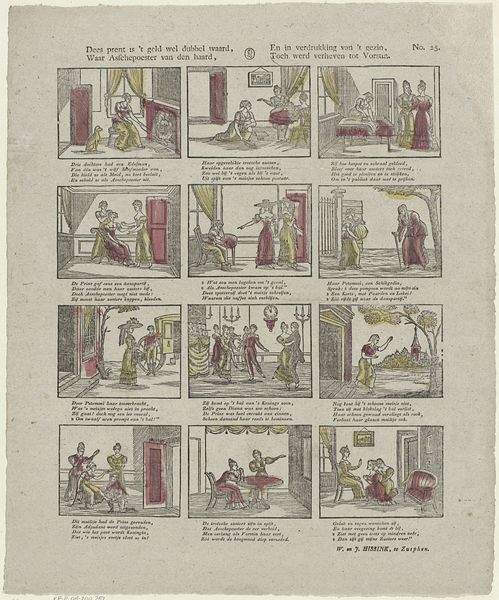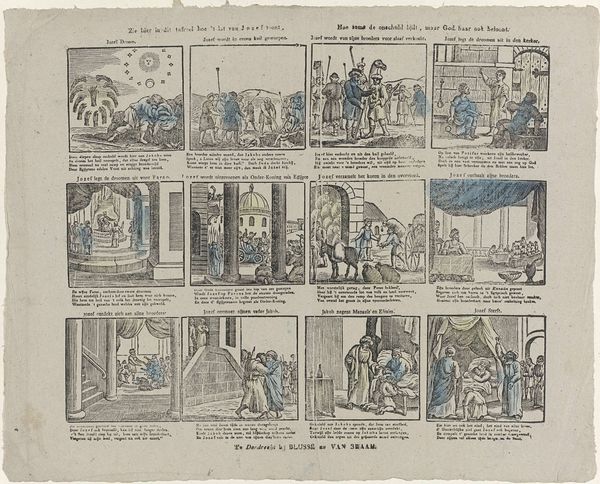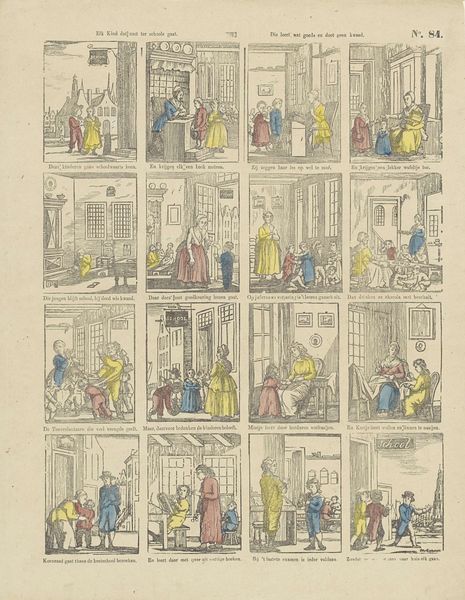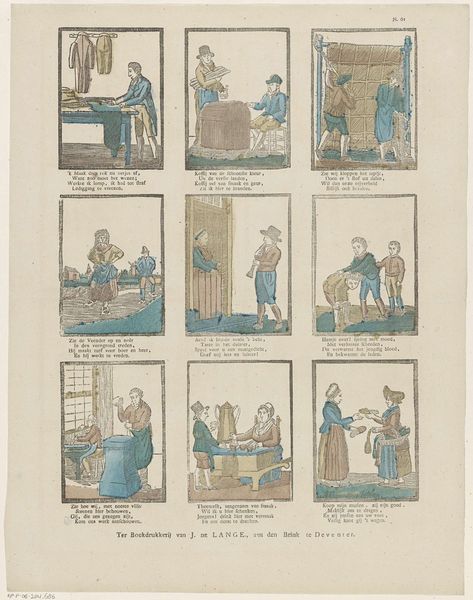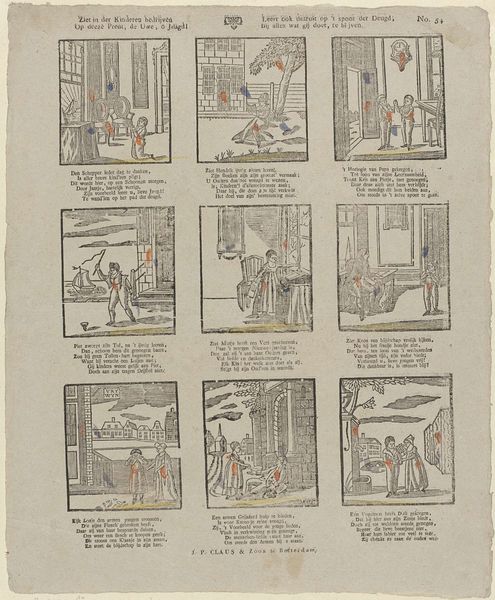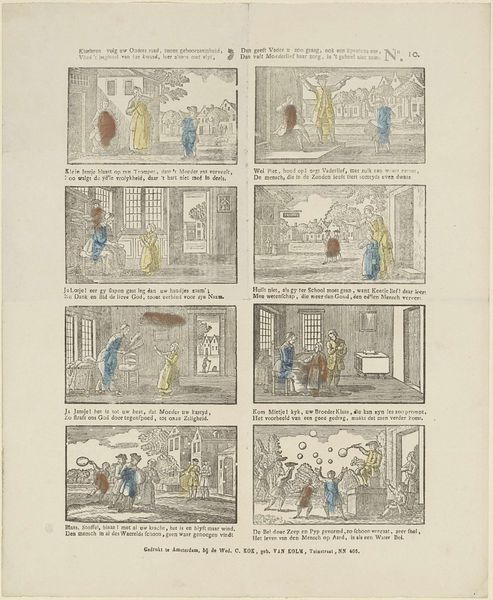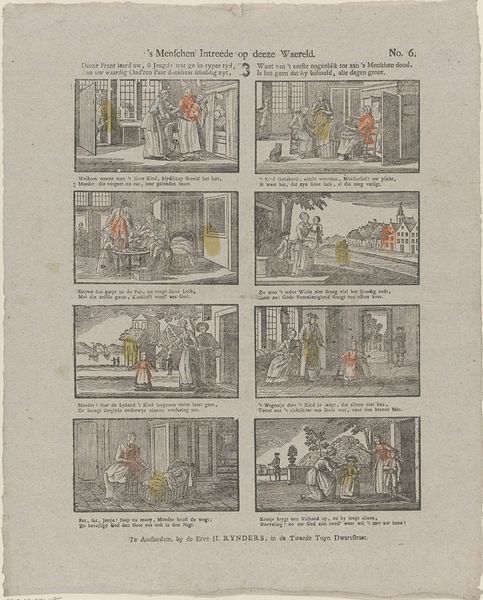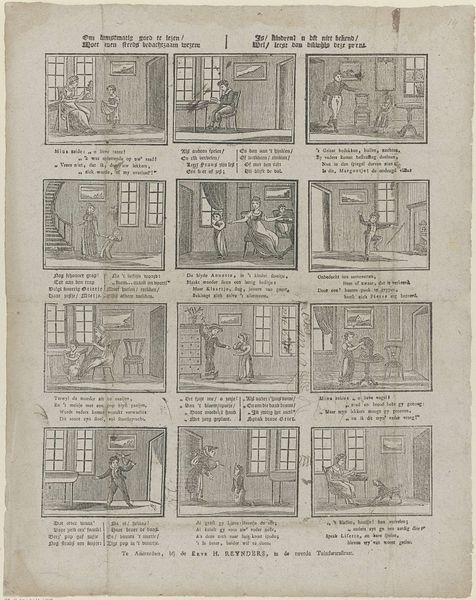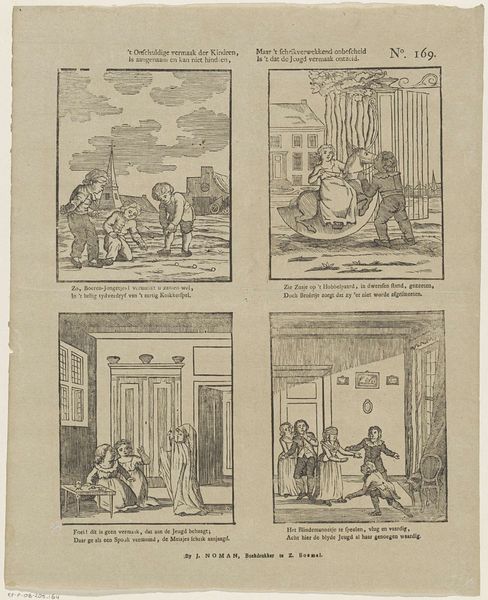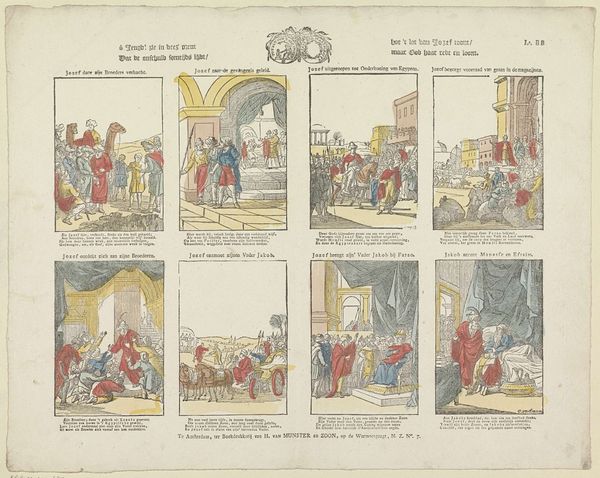
print, paper, engraving
#
narrative-art
#
dutch-golden-age
# print
#
paper
#
genre-painting
#
engraving
#
miniature
#
monochrome
Dimensions: height 405 mm, width 335 mm
Copyright: Rijks Museum: Open Domain
Curator: This is "Tijdkorting voor de jeugd," or "Time Off for the Youth," a print made sometime between 1825 and 1829 by Hermanus Numan, currently held at the Rijksmuseum. It's an engraving on paper, and hand-tinted, depicting a series of small scenes, almost like a comic strip. Editor: It has a playful feel, almost childlike, despite the rather serious attire of the figures. The scenes, although monochrome, look like vignettes from domestic life. The small format and neatness make them feel contained, like miniature stage sets. Curator: Indeed. Each scene, complete with its rhyming Dutch caption, offers a glimpse into everyday routines. We see moments of rest, work, leisure, and household chores, giving insight into the lives of bourgeois Dutch youth. Editor: I'm intrigued by the arrangement – the grid structure itself feels very orderly, very much about structuring time, almost controlling it, as the title suggests. Is "time off" here a comment on work, leisure, or maybe just education? Curator: Well, that's an excellent point! These aren't historical events; these scenes are more like morality tales, emphasizing diligence and the proper allocation of time. These images operate almost like modern-day productivity tips, just framed within a highly codified and visually appealing structure. Editor: So, it's less about freedom and more about the *right* way to spend youth, structured according to specific social mores and gender expectations? Like, who is portrayed as working and relaxing versus tending to domestic duties is certainly worth thinking about… Curator: Absolutely. Numan's background and the specific engravings being reproduced, distributed and sold, especially those targeted towards youth, suggests that the intent was educational. But the miniature format, the hand-tinted element – these all elevate what might have been merely instructional into something precious and collectible. It almost serves as an aspirational snapshot. Editor: Ultimately, I appreciate that the imagery makes me think about labor and privilege—both in terms of who has leisure time and who produces these commodities. Curator: The beauty of symbols is that they compress such histories and ideologies, communicating them even through seeming mundanity. Editor: It invites one to consider their role within their community. What are the expected structures and norms and are we adhering to them? Food for thought indeed.
Comments
No comments
Be the first to comment and join the conversation on the ultimate creative platform.
